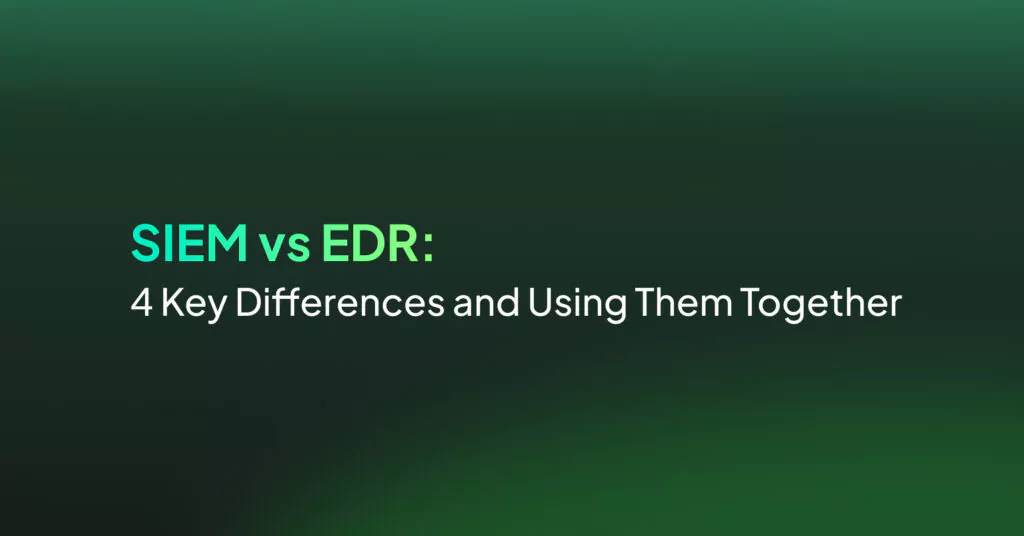How A Managed SOC Works, Features, and Pros/Cons

How Do Managed SOC Services Work?
Managed SOC services operate through continuous monitoring, threat detection, and incident response. The service provider uses technologies such as SIEM (security information and event management) systems, intrusion detection systems, and endpoint detection tools to gather and analyze data from across the client’s network. Any anomalies or potential threats are flagged for further investigation.
When a threat is detected, the managed SOC team initiates an incident response process. This includes isolating affected systems, mitigating the threat, and restoring normal operations. The SOC team also provides reports and recommendations to prevent future incidents.
Managed SOC Features
Managed SOC providers typically offer the following services.
Round-the-Clock Security Monitoring
24/7 monitoring enables immediate detection of suspicious activities, reducing the window of opportunity for cyber criminals. Tools like SIEM systems continuously aggregate and analyze vast amounts of data in real time. Having a dedicated team of security professionals working in shifts ensures that any alert or anomaly is promptly addressed, regardless of the time of day.
Threat Detection and Incident Response
Managed SOC services deploy detection mechanisms to identify both known and emerging threats. Automated tools and machine learning models help in recognizing patterns that indicate potential security incidents, ensuring that threats are identified quickly and accurately. Incident response involves taking immediate action once a threat is detected. This includes isolating affected systems, conducting a thorough analysis of the threat, and taking steps to neutralize it.
Security Posture Assessments
Security posture assessments are essential for understanding an organization’s current security landscape and identifying potential vulnerabilities. Managed SOCs perform these assessments regularly to evaluate and improve the effectiveness of security measures. This involves conducting penetration testing, vulnerability assessments, and compliance checks.
Security Reporting
Security reporting provides detailed insights into security activities and incidents. These reports offer visibility into what threats have been detected, the actions taken, and the status of the organization’s security health. Regular reporting helps stakeholders stay informed about the security posture and the effectiveness of implemented measures, while also supporting compliance with regulatory requirements.
Related content: Read our guide to threat hunting tools (coming soon)
Benefits of Managed SOC Providers
Using a managed SOC provider offers several benefits to organizations.
Proactive Threat Prevention
The managed SOC’s experts use threat intelligence and predictive analytics to anticipate and neutralize threats before they can impact the organization. By continuously analyzing global threat landscapes, they can identify potential risks early and implement preventive measures. Managed SOCs also update their tools and techniques regularly to counter new threats.
Latest Security Tools
Managed SOC providers often leverage the most up-to-date security tools to offer superior protection. These tools include threat detection systems, machine learning algorithms, and automated response mechanisms. Access to such tools is often beyond the reach of many organizations due to cost and expertise constraints. By partnering with a managed SOC, organizations can benefit from top-tier security technologies without significant investments.
Access to Specialized Expertise
These providers employ security professionals with extensive experience and knowledge in various aspects of cybersecurity. Their expertise includes threat intelligence, incident response, compliance, and best practices in security management. This specialized knowledge ensures that an organization’s security measures are up-to-date and aligned with industry standards.
Managed SOC vs MSSP: What Is the Difference?
Managed SOC (security operations center) and MSSP (managed security service provider) are often conflated, but they serve different purposes.
A managed SOC is a dedicated service that provides continuous, real-time monitoring, threat detection, and incident response. It is typically more hands-on, with a focus on actively managing and responding to security incidents as they occur. Managed SOC services are deeply integrated into the client’s environment, providing monitoring, detection, analysis, and response. These services are often tailored to the needs of the organization and involve a high level of collaboration between the SOC team and the client’s internal IT and security teams.
MSSP offers a broader range of security services that may include firewall management, antivirus updates, intrusion detection system (IDS) management, and vulnerability scanning. MSSPs tend to provide more generalized security services, often focused on maintaining and managing security technologies rather than the active, real-time threat detection and response that a managed SOC provides. MSSPs typically operate on a service level agreement (SLA) basis, where they monitor and manage the security infrastructure but may not be as deeply involved in the incident response process.
Challenges of Managed SOCs
Before committing to a managed SOC, organizations should also be aware of the potential challenges involved.
Finding the Right Provider
Organizations must evaluate potential providers based on their expertise, technology stack, and the quality of their incident response capabilities. A provider’s track record and their approach to threat detection and incident management are crucial factors to consider.
Organizations should also assess providers based on their compliance with regulatory requirements and their ability to integrate with existing systems. The right provider should offer customized solutions that align with the needs and risk profile of the organization.
Selecting the Right Service Tier
Different providers offer various tiers of service, from basic monitoring to comprehensive security management. Organizations need to align their cybersecurity requirements with the appropriate service level.
Understanding the specific threats an organization faces and its risk tolerance will help in choosing the correct service tier. This involves balancing between cost considerations and the level of security needed. The chosen tier should provide adequate protection without overextending resources, ensuring effective security management.
Privacy and Data Confidentiality
Organizations need to ensure that the provider adheres to strict data protection regulations and implements measures to safeguard sensitive information. This includes encryption, access controls, and stringent data handling policies.
Trusting a third-party provider with sensitive data requires thorough vetting to ensure they have strong privacy practices and a proven track record of maintaining data confidentiality. Clear contractual agreements and regular audits can help in ensuring compliance with privacy standards, mitigating the risk of data breaches and unauthorized access.
Snowbit MDR
Snowbit combines Coralogix’s advanced SIEM with expert-managed security services, creating a unique and cost-effective solution for comprehensive threat protection. Offering proactive, 24/7 monitoring of security events and posture, Snowbit acts as an extension of your security team to not only identify threats and incidents in real time but also resolve them within minutes. With transparent pricing and in-stream data optimization, Snowbit provides unparalleled protection without complexity and is trusted globally to secure cloud environments with speed and precision.





